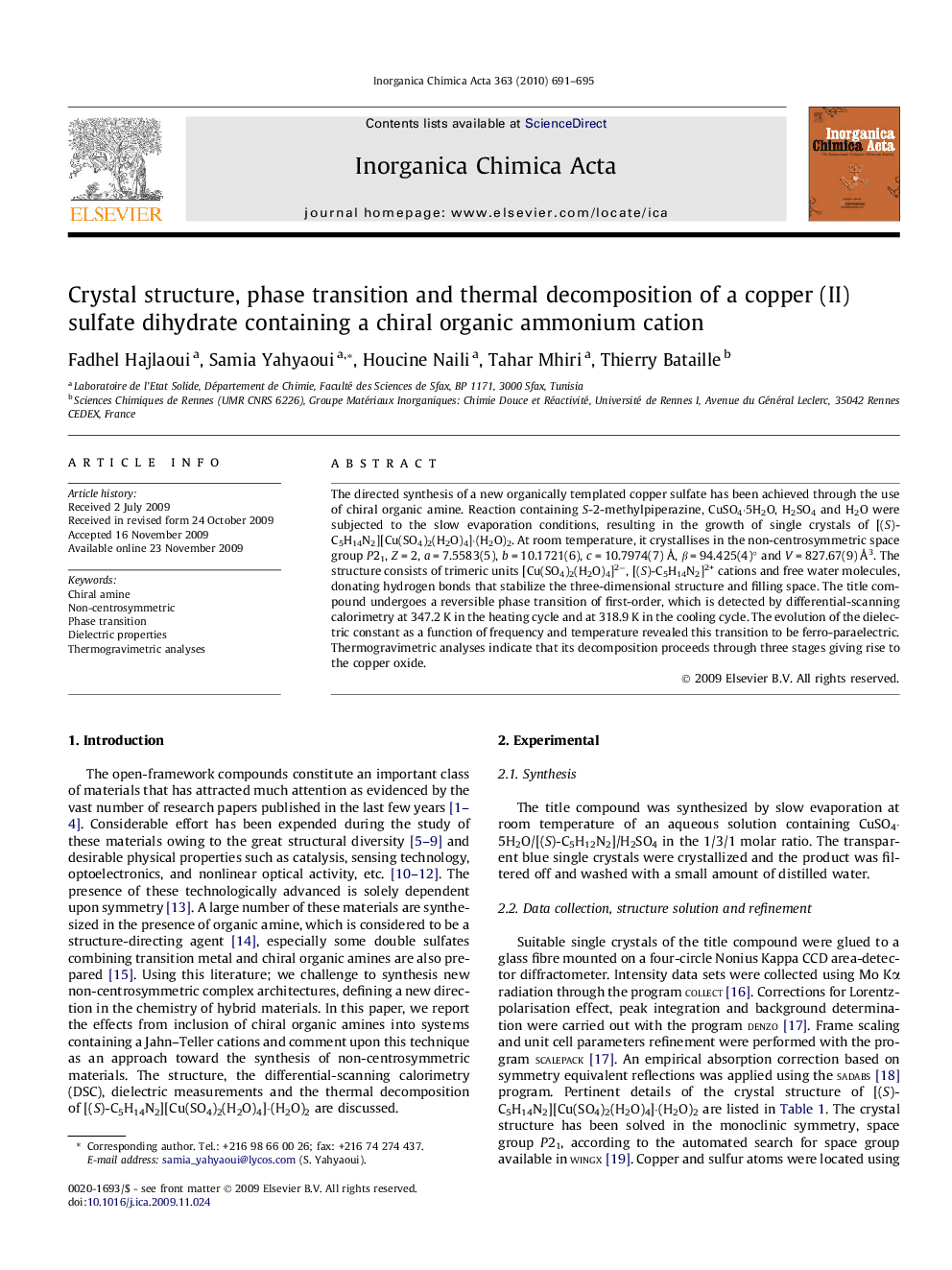| Article ID | Journal | Published Year | Pages | File Type |
|---|---|---|---|---|
| 1311232 | Inorganica Chimica Acta | 2010 | 5 Pages |
The directed synthesis of a new organically templated copper sulfate has been achieved through the use of chiral organic amine. Reaction containing S-2-methylpiperazine, CuSO4·5H2O, H2SO4 and H2O were subjected to the slow evaporation conditions, resulting in the growth of single crystals of [(S)-C5H14N2][Cu(SO4)2(H2O)4]·(H2O)2. At room temperature, it crystallises in the non-centrosymmetric space group P21, Z = 2, a = 7.5583(5), b = 10.1721(6), c = 10.7974(7) Å, β = 94.425(4)° and V = 827.67(9) Å3. The structure consists of trimeric units [Cu(SO4)2(H2O)4]2−, [(S)-C5H14N2]2+ cations and free water molecules, donating hydrogen bonds that stabilize the three-dimensional structure and filling space. The title compound undergoes a reversible phase transition of first-order, which is detected by differential-scanning calorimetry at 347.2 K in the heating cycle and at 318.9 K in the cooling cycle. The evolution of the dielectric constant as a function of frequency and temperature revealed this transition to be ferro-paraelectric. Thermogravimetric analyses indicate that its decomposition proceeds through three stages giving rise to the copper oxide.
Graphical abstractIn the present study, the acentric crystal structure of the title compound was expected from the incorporation of an enantiomerically pure chiral amine [S-2-methylpiperazine] used in the synthesis.Figure optionsDownload full-size imageDownload as PowerPoint slide
